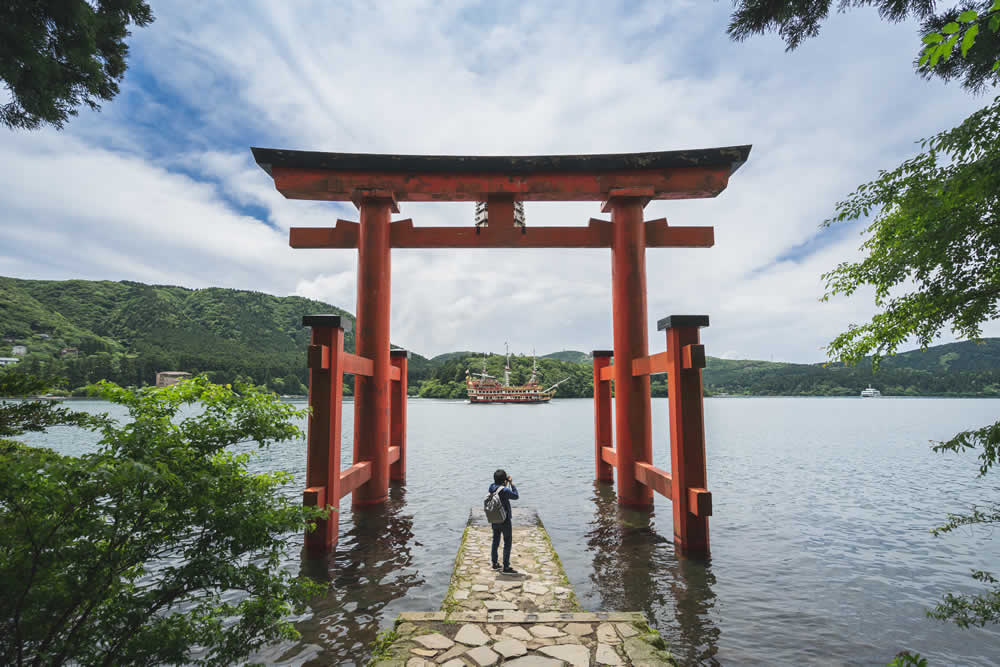A digital nomad is a professional who relies on technology to work remotely and live an independent, location-flexible lifestyle. They often work in fields like programming, writing, design, consulting, and teaching, among others.
The digital nomad lifestyle is appealing due to the freedom it provides. It allows you to explore new cultures, meet diverse people, and embrace a flexible work-life balance.
With its unique blend of traditional culture and modern conveniences, Japan is quickly becoming one of the most popular destinations for international digital nomads. In this article, we will unveil the reasons behind its growing attraction and provide a comprehensive guide for anyone considering a nomadic lifestyle in Japan.
Contents
- Why Japan is a Rising Star for Digital Nomads
- Recommended Locations for Digital Nomads in Japan
- Navigating Workspaces in Japan: A Guide for Digital Nomads
- Navigating Daily Life as a Digital Nomad in Japan
- The Future of Digital Nomadism in Japan
- Things to note about traveling in Japan
- Closing Thoughts on Life as a Digital Nomad in Japan
Why Japan is a Rising Star for Digital Nomads
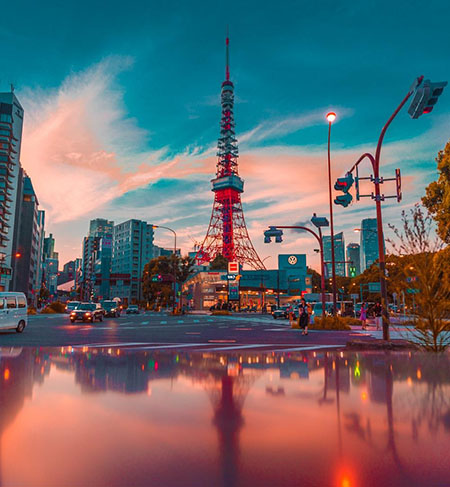
Japan’s Unique Cultural and Historical Appeal
Japan offers a rich tapestry of experiences for digital nomads, ranging from its unique culture and traditions to modern amenities and conveniences. It combines centuries-old traditions with cutting-edge technology and futuristic cities.
High Quality of Life and Safety Standards
Japan is known for its high quality of life and safety, which are essential considerations for digital nomads. Public transportation is efficient, clean, and reliable, and the country boasts a low crime rate.
Japan’s Technological Infrastructure and Connectivity
Japan’s highly developed technological infrastructure makes it easy for digital nomads to stay connected. With its nationwide high-speed internet, even the rural areas of Japan usually provide sufficient conditions for remote work.
Recommended Locations for Digital Nomads in Japan
Digital nomads can choose from a variety of cities in Japan, each offering unique experiences. From the bustling metropolis of Tokyo and the historic charm of Kyoto to the tropical paradise of Okinawa, there’s a city for every digital nomad in Japan.
For those new to Japan or with limited Japanese proficiency, starting in an urban city might be more advantageous. English usage is more common, and cities offer a broader range of amenities and international communities. As your familiarity with Japanese language and culture grows, exploring rural areas can present a different and rewarding aspect of life in Japan.
Tokyo: The Cosmopolitan Hub
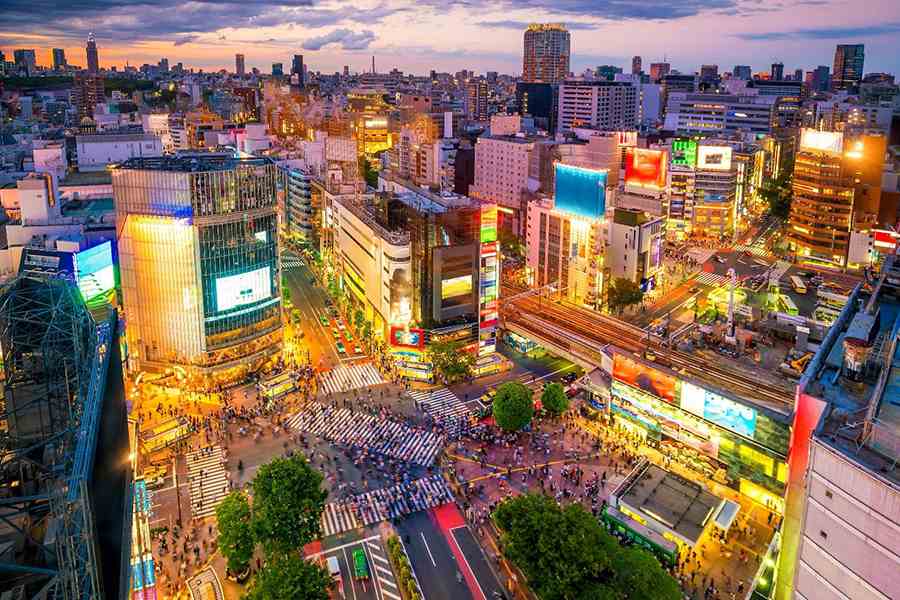
As Japan’s bustling capital, Tokyo offers a wealth of co-working spaces. From established chains like WeWork and The Hive to local favorites like The Snack, coworking spaces in Tokyo are vibrant and diverse, catering to every taste and working style.
Tokyo offers an array of social and cultural experiences. From exploring historical landmarks, such as the Imperial Palace and Sensoji Temple, to enjoying Tokyo’s dynamic nightlife in neighborhoods like Shibuya and Roppongi, there’s never a dull moment in this city.
The city offers an efficient public transportation system, world-class cuisine, and unlimited networking opportunities. However, the cost of living can be higher than other cities in Japan, and Tokyo’s fast-paced lifestyle may not suit everyone.
Kyoto: The Cultural Heartland
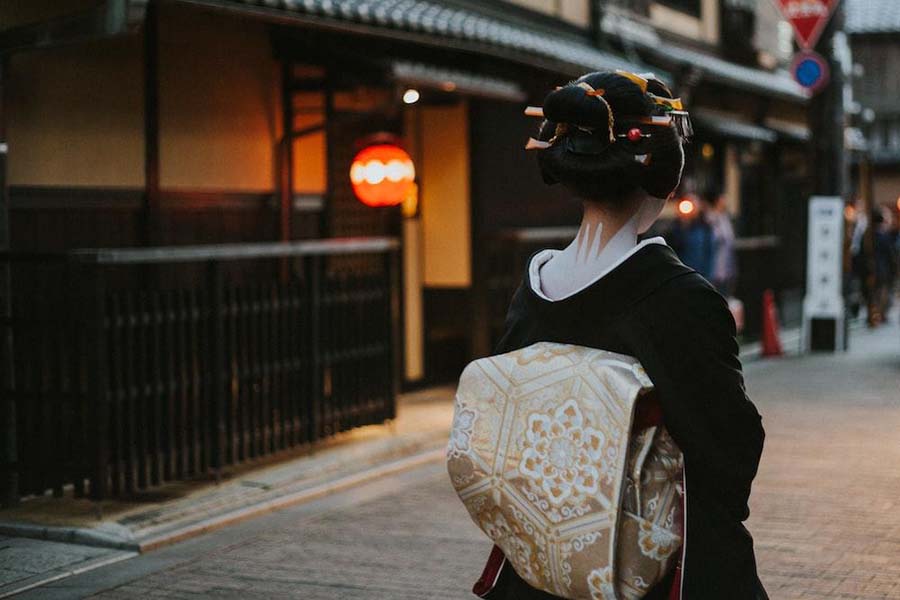
Japan’s ancient capital Kyoto blends traditional Japanese culture with modern attractions. People visit for the traditional and calm atmosphere, and a sense of the Japan of old. It can also be pricey, but not as much as Tokyo. Here, digital nomads can marvel at ancient temples during the day and work in modern co-working spaces at night.
With a number of tech startups and international events, Kyoto provides ample opportunities for digital nomads to network and collaborate.
Osaka: The Nation’s Kitchen
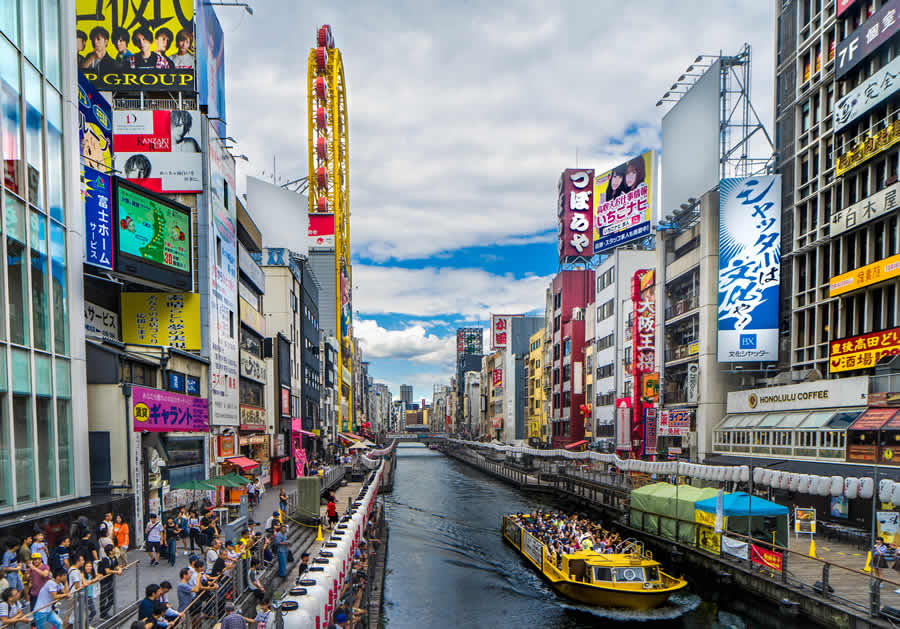
Compared to Tokyo, Osaka offers a lower cost of living. It is known for iis very lively and friendly atmosphere. The affordability, combined with a rich cultural heritage and excellent food scene, makes Osaka an appealing choice for digital nomads.
Osaka, often referred to as the “Nation’s Kitchen,” is renowned for its culinary delights. From Japanese street food stalls to upscale restaurants, the city offers something for every palate.
Osaka is home to many coworking spaces. These venues offer a conducive environment for productivity and creativity.
Fukuoka: The Emerging Startup City in Kyushu
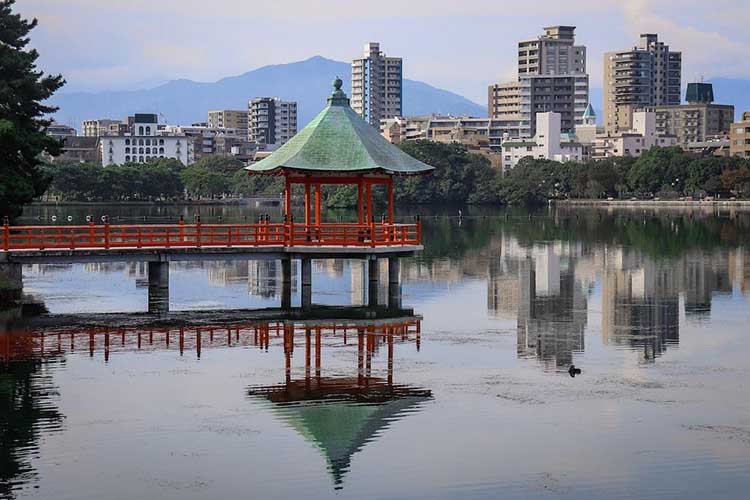
Fukuoka is an emerging hotspot for startups, thanks to its innovative Startup Visa program, which allows entrepreneurs to establish businesses under certain conditions.
Fukuoka provides an ideal balance of city life and nature. The city is compact and easy to navigate, and it’s also home to beautiful parks and beaches.
With its supportive startup environment and slower pace of life compared to bigger cities, Fukuoka is attracting an increasing number of digital nomads.
Okinawa: The Tropical Paradise

Okinawa, the southernmost prefecture of Japan consisting of beautiful islands, is renowned for its tropical climate and pristine beaches.
For digital nomads looking to embrace slow living, Okinawa is an ideal destination. Imagine working from a beachside cafe or coworking space with a breathtaking ocean view.
There are many coworking spaces in Naha, the largest city in Okinawa. Known for its rapid internet speeds and variety of work-from-home venues, Naha offers an enticing blend of modern convenience and tropical allure.
Okinawa has a vibrant international community, offering plenty of opportunities for networking and socializing.
Hokkaido: The Northern Frontier

Hokkaido offers digital nomads a unique experience with its beautiful four seasons. From snowy winters to vibrant spring blooms, each season offers its own charm.
Hokkaido is perfect for digital nomads who love the outdoors. Whether it’s hiking in summer or skiing in winter, there’s always an adventure waiting.
From Sapporo’s dynamic city life to the serene beauty of Lake Toya, Hokkaido offers unique attractions for digital nomads looking to explore different aspects of Japanese culture and lifestyle.

Exploring Japan’s Coworking Culture
In recent years there has been a surge in the number of coworking spaces in Japan, particularly in big cities like Tokyo and Osaka. In these cities, it’s not at all difficult to find a coworking space to suit your needs, that has all the facilities and capabilities of a regular office.
However, you’ll be hard-pressed to find them in the less densely populated areas.
Must-Visit Coworking Spaces Across Japan
Coworking spaces in Japan are designed for comfort, productivity, and creativity. They typically offer high-speed internet, meeting rooms, event spaces, and opportunities to network with local and international professionals.
Tokyo
Osaka
Kyoto
Fukuoka
Hokkaido (Sapporo)
Okinawa
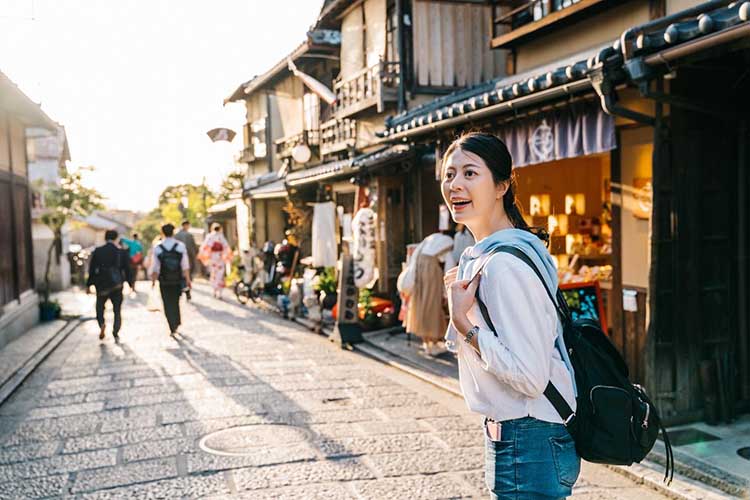
Cost of Living for a Digital Nomad in Japan
Despite its reputation for being expensive, it’s possible to live affordably in Japan. Various cities offer different lifestyles, and understanding your needs and preferences will help you find the perfect spot.
For one thing, many points of interest when traveling around Japan are completely free or have very low entrance fees. Beautiful shrines and temples are free to enter, as are many of the gorgeous national parks and natural land all over the country. There are even free tour guides available in some areas like Tokyo.
Of course, there are other things to consider when setting a budget. One of those is transportation. While trains and bullet trains can be quite pricey, the country is well connected by bus and overnight bus, which is a great budget alternative.
As for accommodation, capsule hotels, hostels, and even manga cafes make for good places to sleep when the purse strings are tight.
You might think that food will then take up the remainder of your budget, but that’s certainly not the case if you do your research and know where to go. If you’re staying at an Airbnb, you can easily cut down costs by buying groceries and cooking for yourself most of the time. Otherwise, there are plenty of chain restaurants or locally owned spots with incredibly low prices. For example, a bowl of rice topped with beef at a popular chain, Yoshinoya, is just 426 JPY.
The Cultural Adjustment: Language, Etiquette, and Customs
While Japanese culture is fascinating, it can also be complex. Understanding the language, etiquette, and customs can go a long way in making your nomadic experience in Japan more enriching and fulfilling.
Japan’s Healthcare System: What Digital Nomads Need to Know
Japan offers an excellent healthcare system with modern and advanced hospitals and clinics. Health insurance is available for its residents. If you do not have a resident permit
The Future of Digital Nomadism in Japan
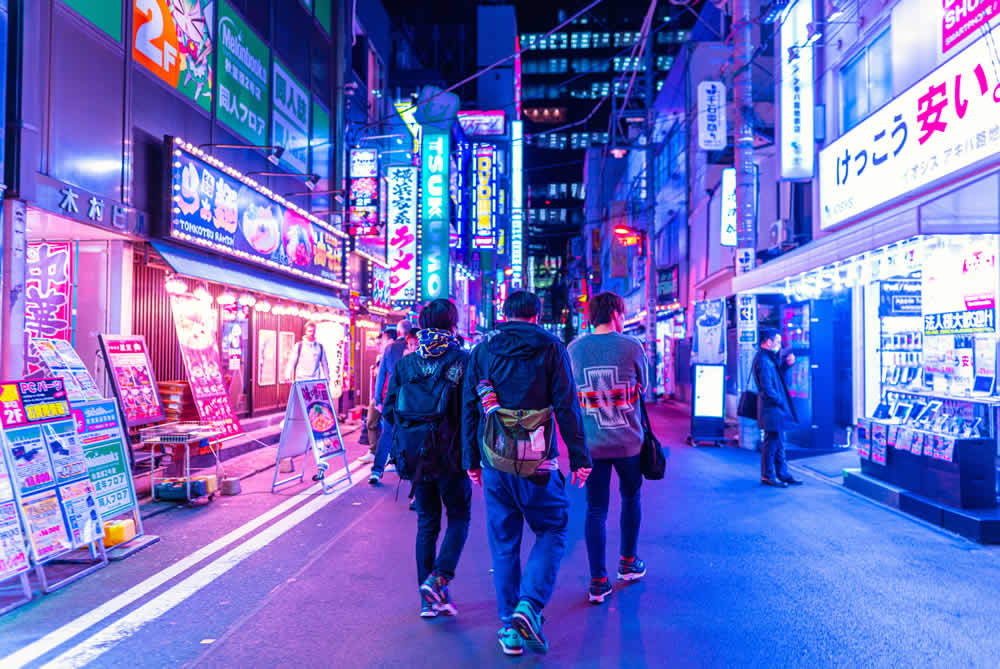
How Japan is Adapting to the Rise of Remote Work
Japan is increasingly acknowledging the benefits of remote work. Government initiatives are being introduced to support this new way of working, making Japan a compelling destination for digital nomads.
Japan’s Vision for Attracting More Digital Nomads
With its unique blend of tradition and modernity, Japan has a clear vision for attracting more digital nomads. From developing co-working and co-living spaces to initiating supportive government programs, Japan is set to become a top destination for digital nomads in the future.
As the trend of digital nomadism grows worldwide, Japan has started exploring ways to embrace this modern working style. In 2023, discussions began around the possibility of introducing a digital nomad visa in Japan, reflecting the country’s openness to evolving work dynamics and international talent. This prospective visa could potentially pave the way for digital nomads worldwide, making Japan an even more attractive destination for these location-independent professionals.
Potential Challenges and Opportunities for Digital Nomads in Japan
While there are numerous opportunities in Japan for digital nomads, there can also be challenges such as language barriers and cultural differences. However, these can be overcome with time, patience, and an open mind.
Things to note about traveling in Japan
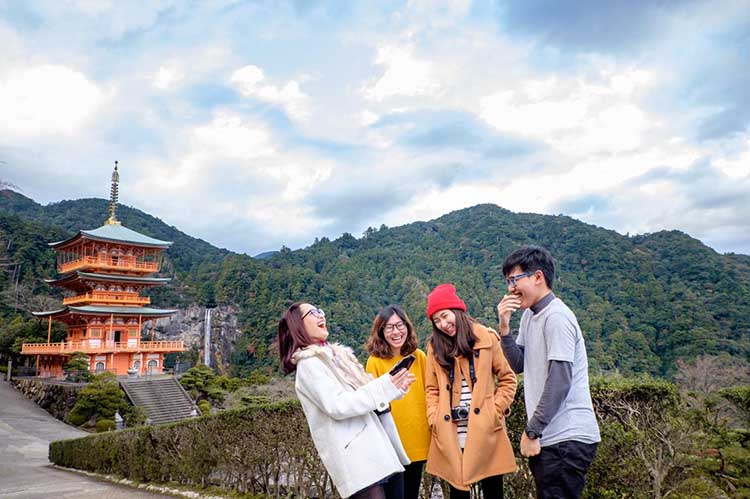
As with any country, there are some things to be aware of before you go rushing off to start your digital nomad travels in Japan.
The reality of travelling in Japan is that English is not commonly spoken, especially outside larger cities. People may be willing to assist, but their proficiency may be limited. Patience is key in these interactions as most are genuinely trying to be helpful. More populated tourist areas may have more English speakers, but the level of fluency may vary.
Travel with a Japanese speaker, a guide, or rely on translation apps like Google Translate to overcome the language barrier. With advances in technology, these apps are increasingly effective and can prove essential for navigating local situations.
Japan boasts an impressive network of buses and trains connecting most places. However, the journey isn’t always straightforward. Signage and announcements may be in Japanese only, especially on local transport. Major cities have complex train systems that may require multiple transfers. Plan your route beforehand, knowing your stops, and understand the actual distance between connections.
To overcome transport challenges, keep your phone charged and connected. Carry a portable charger and pocket WiFi to ensure consistent access to online navigation tools.
Lastly, just like anywhere else, if you’re traveling solo, be cautious. Keep your belongings safe, inform someone of your plans, and enjoy the unforgettable experience of travelling in Japan.
Closing Thoughts on Life as a Digital Nomad in Japan
While Japan offers a unique blend of tradition and modernity, it’s the country’s adaptability to the digital age that makes it increasingly appealing to digital nomads.
Whether you’re drawn to the neon lights of Tokyo, the historic allure of Kyoto, or the tropical vibe of Okinawa, you’ll find a place that suits your nomadic lifestyle.
Navigating the language and cultural nuances might present a challenge, but with the right tools and a sense of adventure, your experience as a digital nomad in Japan will undoubtedly be rewarding and memorable.
